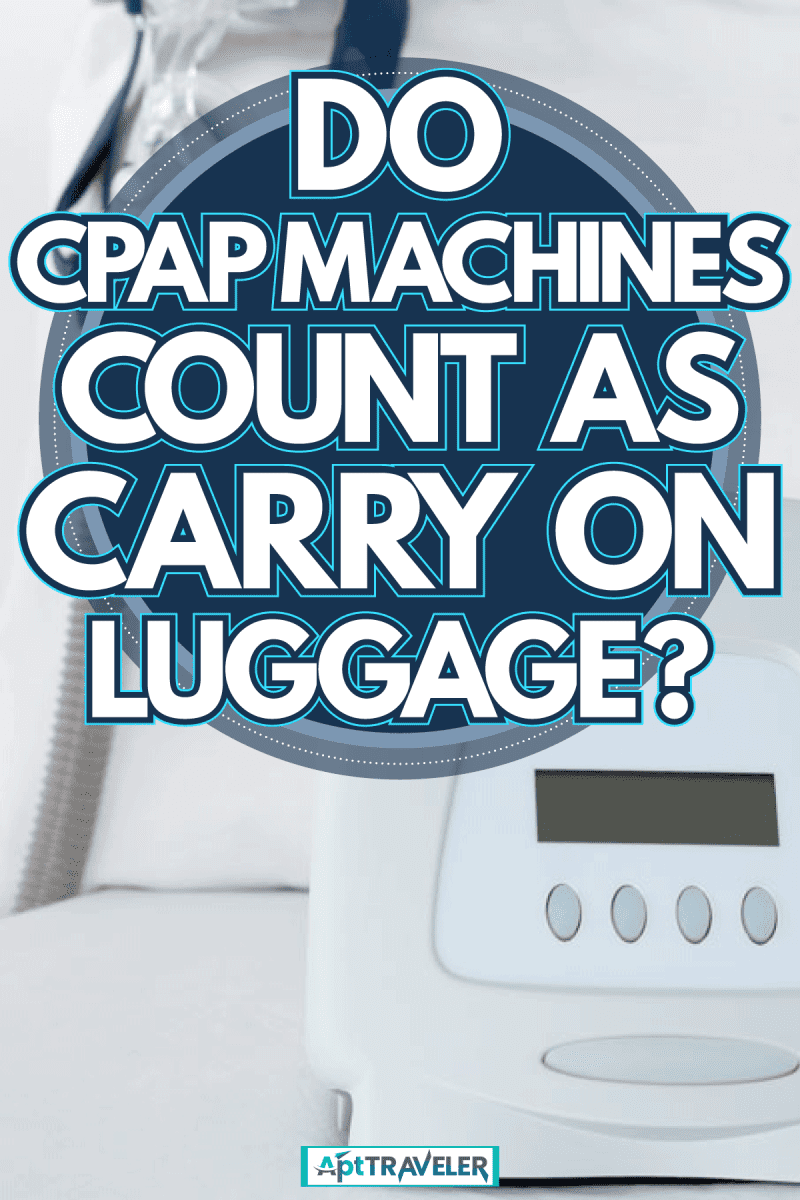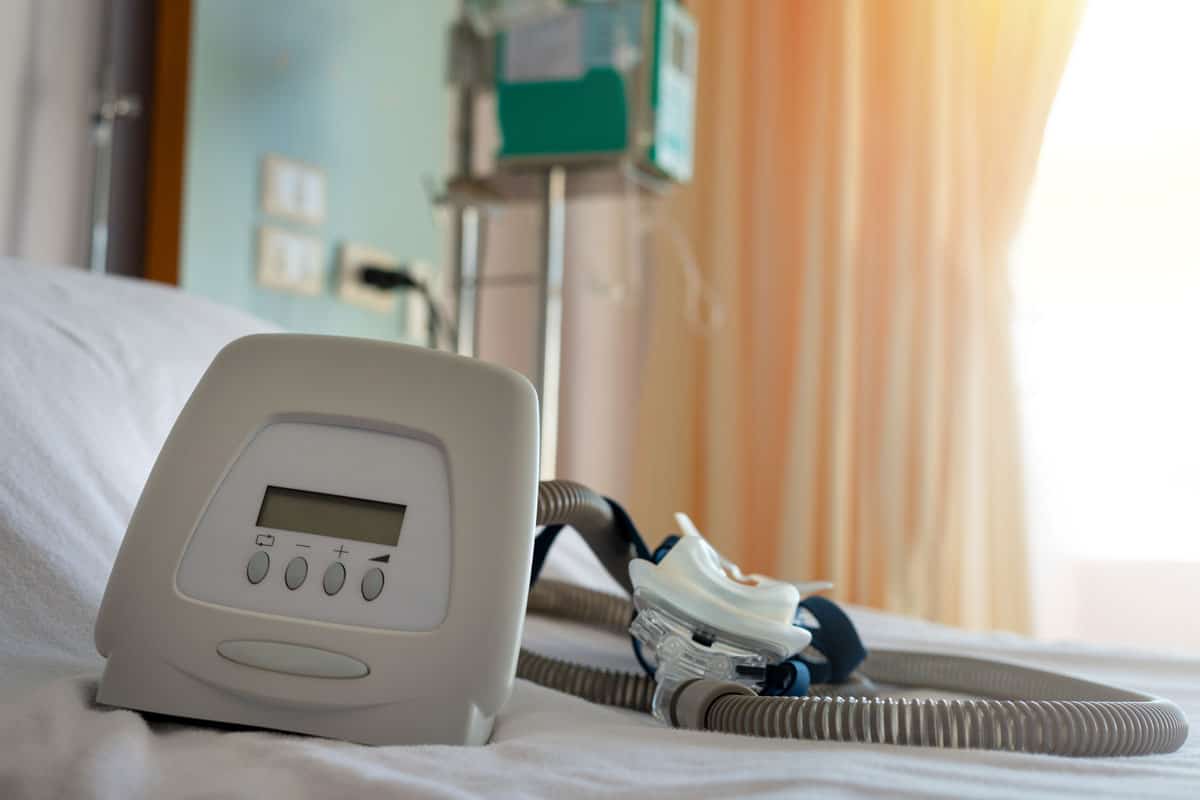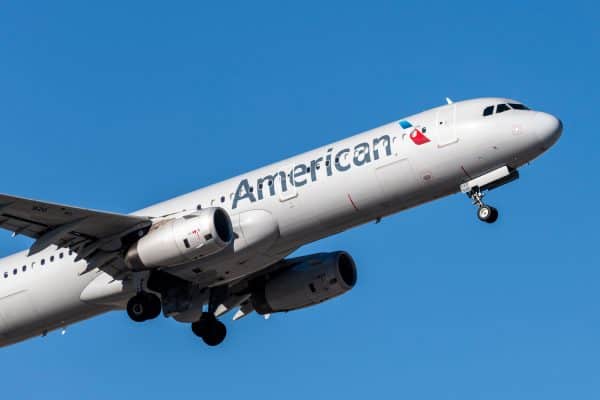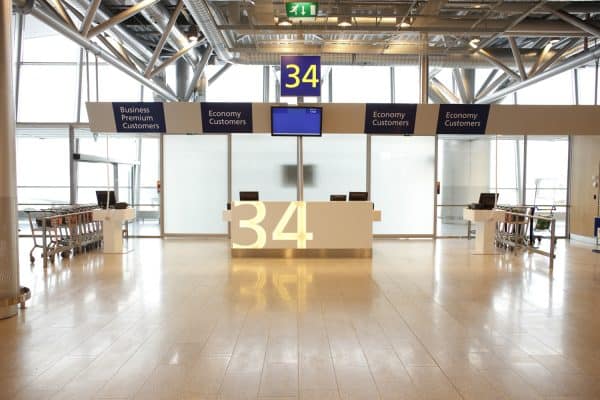Air travel can be a little daunting with so many rules and regulations. If you rely on a CPAP machine and are wondering if it counts as carry-on luggage, worry no more! We've researched this topic thoroughly to help you avoid any travel issues.
Your continuous positive airway pressure (CPAP) machine does not count as a carry-on luggage item because it is a medical device. You should carry the machine around with you to prevent it from being lost or damaged.
Continue reading to find out more in detail about CPAP and its mandates in some airlines. Also, we will share with you some tips for flying with it so you can still enjoy the benefits of CPAP therapy while on the go.

What Is CPAP?
CPAP is a method of treating patients with sleep apnea. Patients who experience breathing difficulties while sleeping frequently use CPAP machines which maintain the airways open with gentle air pressure. More specifically, CPAP therapy works to prevent your airway from collapsing as you breathe while you're asleep.

Additionally, CPAP therapy is used to treat young children whose lungs are still developing. The CPAP machine inflates the baby's lungs by blowing air into its nose.
A CPAP machine is used in CPAP therapy and includes the following components:
- Mask: A nose-only mask, a mask that covers both your nose and mouth or even prongs that go inside your nose.
- Tube: Connects the CPAP machine's motor to the mask.
- Motor: Blows air into the tube.


Click here to see the CPAP machine on Amazon.
Do CPAP Machines Count As Carry On Luggage?

When flying with a CPAP machine, you shouldn't check it as luggage. It must not be harmed while in transit, and the only way to guarantee this is to keep it in your carry-on bag.
Moreover, don't worry about bringing medical equipment like a CPAP with you. Because the Department of Transportation (DOT) states that it is not considered a carry-on or personal item. This means that it is not included in the allowance of one carry-on bag and one personal bag such as a purse or briefcase per traveler.
However, DOT also clarifies that the CPAP machine must have a manufacturer's label certifying that the apparatus complies with Federal Aviation Administration (FAA) regulations.
Consider this when making your plans to ensure you will be able to carry it comfortably. CPAP is still an additional bag to carry though. You can put it under the seat in front of you or in the overhead compartment.
What TSA Mandate on CPAP Air Travel?
Transportation Security Administration (TSA), the organization in charge of managing security for the American travel sector, permits the use of CPAP machines while flying. The TSA strongly advises people who have sleep apnea to travel with their portable CPAP devices.
TSA officers are very familiar with CPAP machines as they see them numerous times daily. They also advise carrying your CPAP machine in your carry-on bag.
So, this is what will happen at the TSA checkpoint. The facemask and tubing can stay in the case. But the CPAP machine will need to be removed from its case. Then, put it in a bin before going through the X-ray.
You are welcome to wrap your CPAP machine in a clear plastic bag before placing it in the X-ray bin because we are aware that they aren't exactly sterile.
After being X-rayed, your CPAP machine might need to go through an Explosive Trace Detection test, which involves running a small white swab over it and checking it for trace amounts of explosives.
It seems pretty reasonable, doesn't it? It's probably a good idea to arrive at the airport even earlier than the suggested two hours for domestic flights and three hours for international flights because it also sounds like it could take some extra time.
What Are the CPAP Machine Requirements for Airlines?
The CPAP policies of different airlines are listed below, along with links to each airline's policy overview.
Air Canada
CPAP may be carried on board Air Canada airlines. However, the use of this medical device on board the aircraft is subject to approval for transport. So you must contact Canada Medical Assistance Desk if you plan on bringing the machine on board with you, even though you won't be using the machine.
American Airlines
If you intend to take your CPAP machine with you or use it while you're flying, American Airlines doesn't require any kind of advance notice.
This airline exempt CPAP from the carry-on baggage restrictions. It might need to be checked if there isn't enough room in the cabin, the device doesn't fit, or if it won't be needed during the flight.
They do point out that passengers shouldn't rely on powered outlets being available. Also, they might even require a DC power adaptor to use the seat power on the aircraft.
United Airlines
You may carry on and use CPAP machines on flights if a manufacturer's label or other proof that the equipment complies with FAA regulations can be found.
If you intend to use your CPAP while flying, at least 48 hours before departure, you must inform the airline's accessibility desk. Have the manufacturer information on hand so that United can quickly confirm that it complies with FAA approval requirements to speed up this process.
However, there is no guarantee that the in-seat power will function and it is only available on a small number of aircraft. So if you intend to use the device in flight, you'll also need to have enough portable batteries to run it for the duration of the flight plus 3 hours.
Delta Airlines
On their website, Delta provides a list of CPAP equipment that has been approved for use without a prescription. If you do not see your device listed, you may notice their accessibility assistance for approval.
Although there are electrical outlets onboard Delta aircraft, they are not designed to support the use of medical devices. So you must bring a source of battery power if you intend to bring a device because they don't provide onboard sources of power for medical devices.
A battery that has a capacity that is at least 150 percent greater than the specified flight time is required for those who intend to use the device while in flight.
Southwest Airlines
Southwest advises you to carry on your CPAP machine to keep it safe. As long as you adhere to all TSA and FAA requirements, you may use it during the flight. Southwest Airlines, like the majority of other airlines, does not have any commercial-use electrical outlets on board the aircraft. So if you intend to use your device while in flight, be ready to bring your power supply.
Tips On Flying With CPAP
The next section is specifically for you if you'll be flying! Here are suggestions to make traveling with your CPAP easier:
1. Make A 48-Hour Advance Notification/Call To Your Airline
No domestic flight can refuse your CPAP machine, but it's a good idea to be aware of your airline's in-flight usage regulations.
2. Invest In A CPAP Case
To facilitate travel, the majority of modern CPAP devices are shipped in a carrying case designed specifically for them. If not, it is better to pack your CPAP machine in a different bag since it won't count as carry-on luggage.


Check here to see this CPAP travel briefcase on Amazon.
3. Bring Distilled Water
To accommodate passengers who wish to use their CPAP device while flying, the TSA permits up to 3.4 oz of distilled water in carry-on luggage. Technically, you are allowed to bring as much distilled water as you like in your checked bag. But the TSA does ask that you keep the water to reasonable quantities.
4. Bring A Backup Power Source
Most of the time, a CPAP backup battery is not required. But if you're traveling somewhere where there is any doubt at all about the stability or availability of electricity, you can still continue your therapy without electricity with an extra battery pack.
5. Keep Copies of Important Documents Handy
The TSA and airline staff are trained to identify medical devices, so they won't be taken aback by your CPAP machine. Having a copy of your manufacturer's FAA-approval status will help to quickly resolve any confusion that may arise.
The majority of modern CPAP machines are FAA-approved for in-flight use. If anything happens to your CPAP machine or other equipment while you're traveling, having a copy of your prescription with you can be helpful.
When you are traveling and need to replace some equipment or supplies, having your prescription on hand is extremely helpful.
Conclusion

Traveling with a CPAP machine doesn't have to be terrifying when you are prepared. When you know what to expect, it's simple to have a smooth experience from start to finish.
Don't forget to pack everything you reasonably can to support a regular bedtime and sleep schedule. Check with your airline 48 hours before your flight if you have any questions and also inquire about their official policies.
Make every effort to get yourself and your gear ready for the journey, and you shouldn't encounter any insurmountable difficulties.



